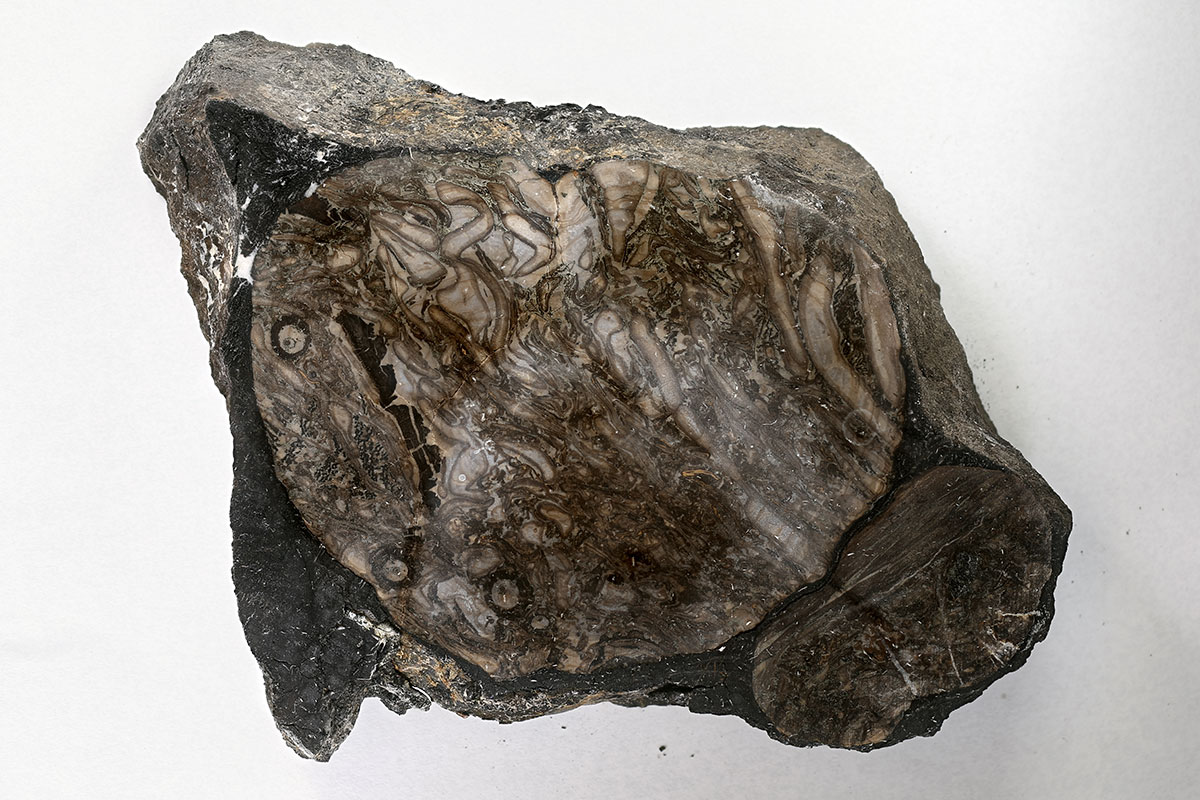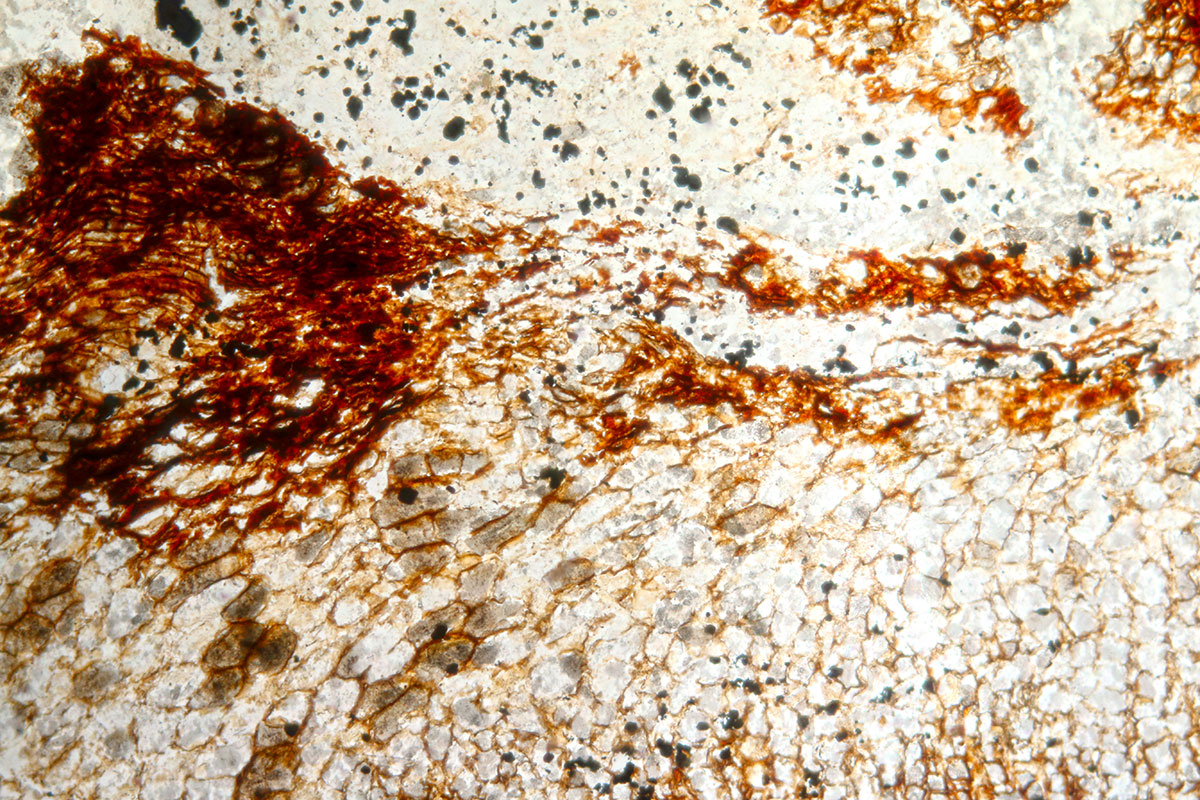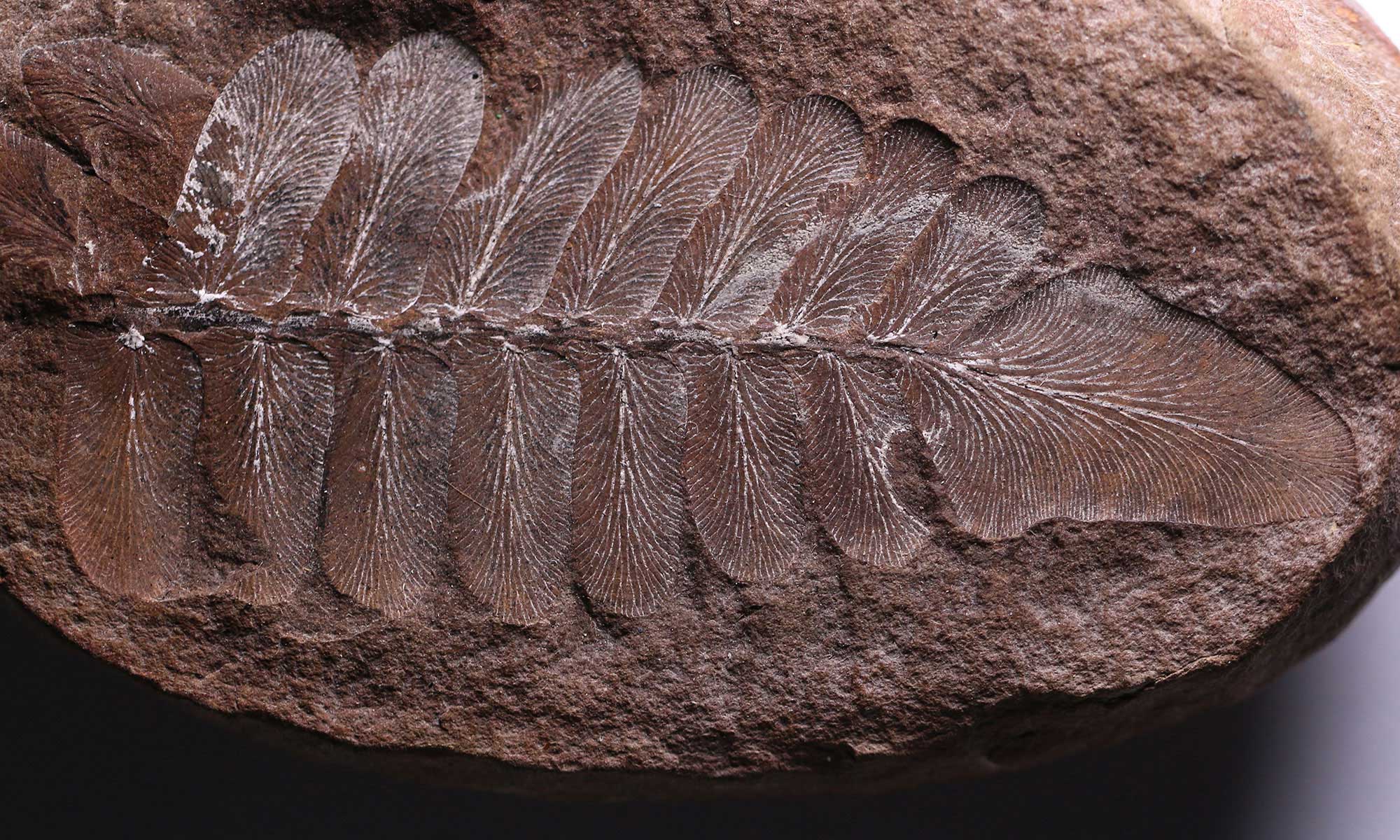Coal balls are petrified pockets of plant debris that were preserved 280 million to 325 million years ago during the Upper Carboniferous Period, sometimes called the Great Coal Age.
Plants immortalized in these coal balls are preserved at the cellular level, details not preserved in other types of fossils. Their remarkable preservation makes coal balls invaluable for reconstructing the environment and climate in the Carboniferous. Scientists have used coal balls to gain insights about temperature, humidity, and C02 during that time.
The Phillips Coal Ball Collection is the largest and most significant collection of coal balls in the world. It contains almost 50,000 intact specimens and a quarter of a million “peels”—extremely thin layers (less than a cell thick) peeled from a coal ball slice. Further, the collection represents 80 different coal seams that together document plant life spanning some 12 million years.
Housed on the south University of Illinois campus, the Phillips Coal Ball Collection is in need of curatorial efforts and remains largely unprocessed.



